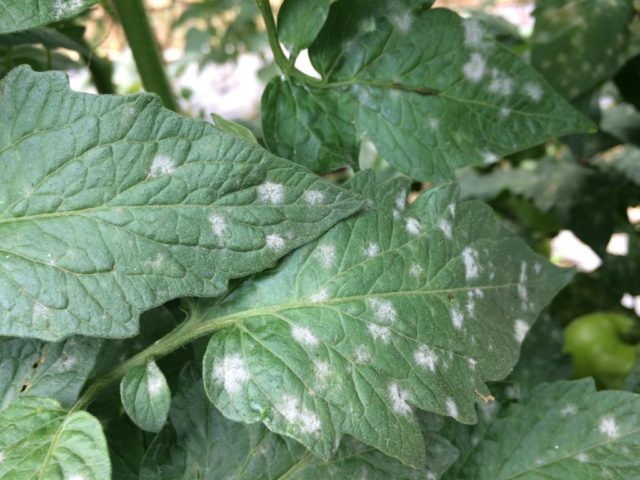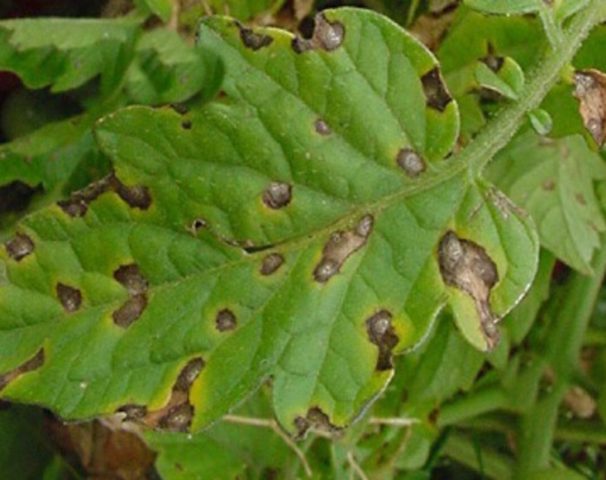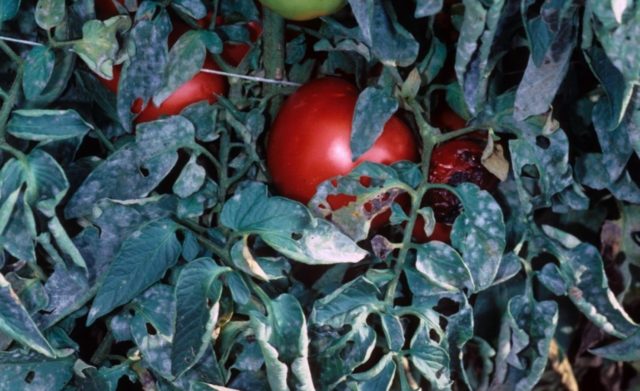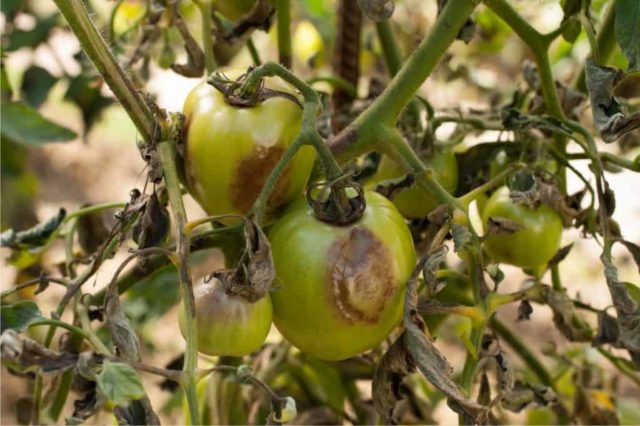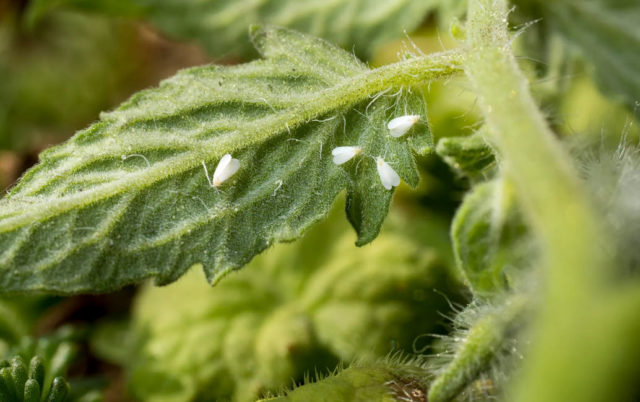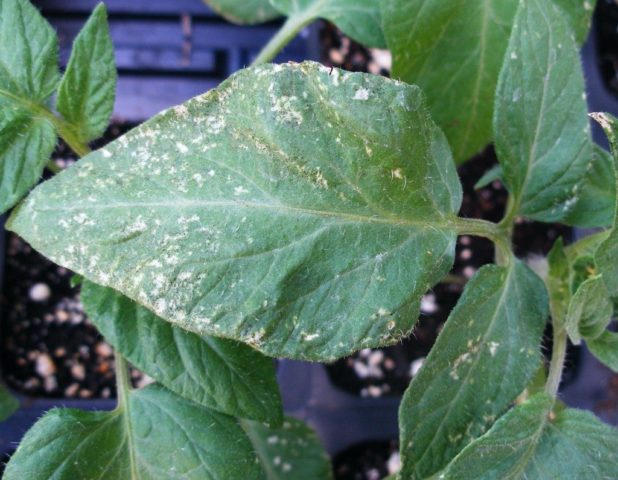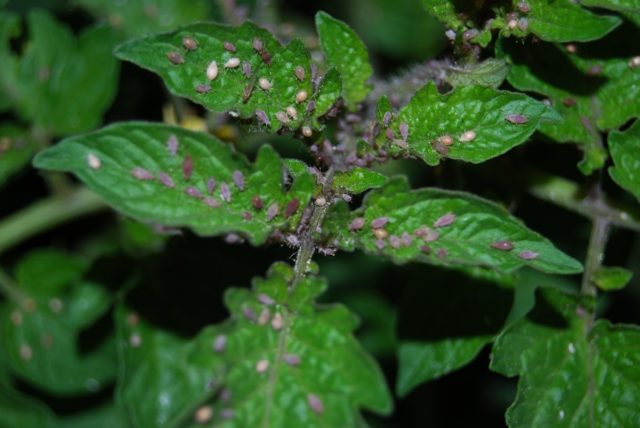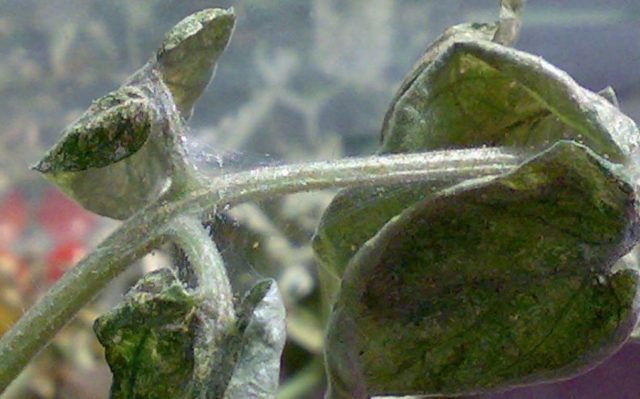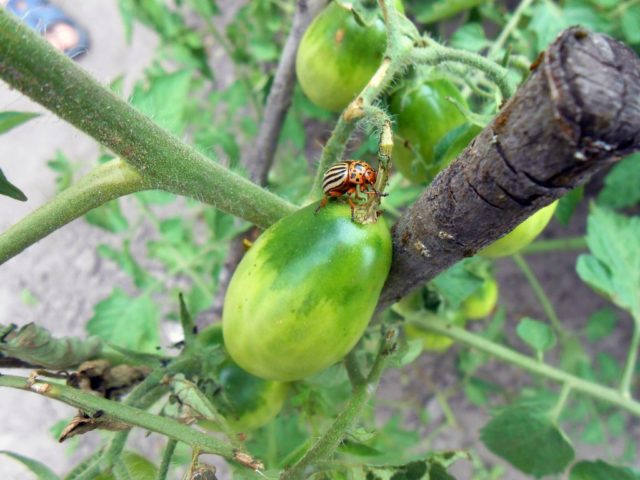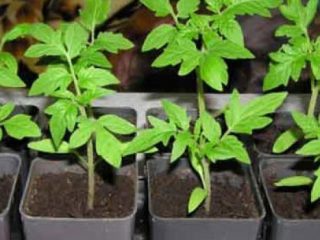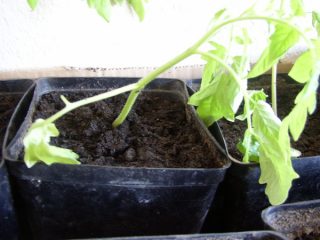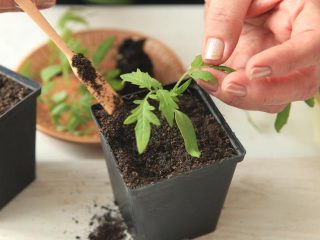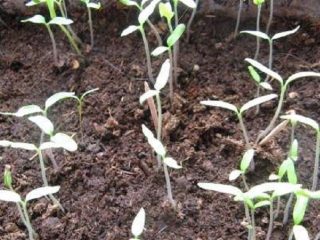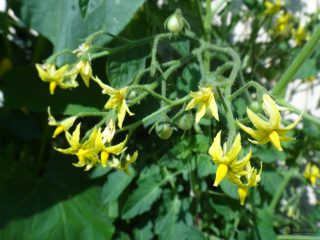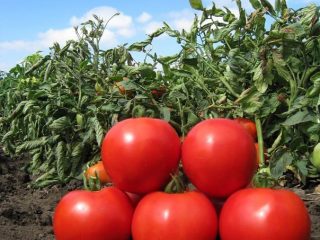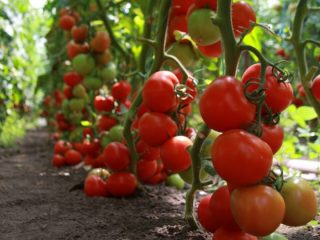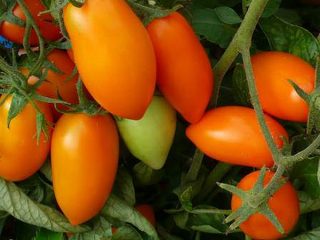Content
The Shaggy Bumblebee tomato surprises everyone who sees it for the first time with its appearance. The fruits resemble peaches due to the presence of edges. In addition, they have excellent taste. And along with the ease of maintenance, the variety is becoming increasingly popular among summer residents.
History of selection
The tomato variety “Shaggy Bumblebee” is included in the State Register of Breeding Achievements approved for use. Intended for cultivation in open ground and under temporary film shelters in private household plots. The originator is the agricultural company Seeds of Altai, registered in the city of Barnaul.
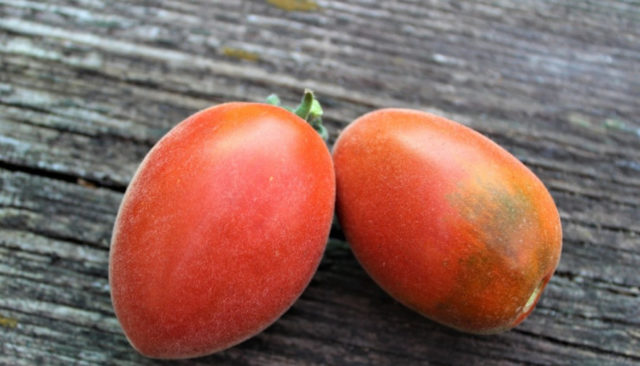
The variety is protected by a patent for selection achievements
Description of the tomato variety Shaggy Bumblebee
The variety bred by Altai breeders is determinate, standard, and low-growing. Its features include:
- stems are strong, compact;
- plant height – up to 60 cm;
- the appearance of 7-8 brushes during the growing season;
- simple flowering;
- formation of up to 7 fruits on one branch;
- The leaf blades are medium-sized, pubescent, dark green with a silvery tint.
The “Shaggy Bumblebee” tomatoes ripen in the mid-early period. The period from the appearance of sprouts to ripeness is 95-105 days. It can be reduced by pinching. To get a harvest faster, gardeners carry out this operation on the entire plant down to the lower brush.
The culture is suitable for growing in various conditions:
- in greenhouses;
- under temporary PVC cover;
- in open ground.
Description of fruits
Tomatoes of the “Shaggy Bumblebee” variety are plum-shaped, cylindrical, with an elongated lower part. Their distinctive feature is the presence of slight pubescence on a dense, smooth skin. Due to this, the variety is called “Siberian peach”.
Ripe fruits reach a weight of 135 g and are easily separated from the stem. In cross-section they are four-chambered. The pulp is fleshy and has moderate juiciness. The color of tomatoes is green at first. The stalk has a darker shade. Ripe tomatoes are red-orange.
Characteristics of the tomato Shaggy bumblebee
The culture is notable for its ability to adapt to temperature changes and sudden changes in weather. In addition, the “Shaggy Bumblebee” variety is characterized by good transportability and keeping quality. The fruits rarely crack.
Tomato yield Shaggy bumblebee and what affects it
If you follow the recommendations for caring for the variety, the yield from each bush reaches 2-3 kg. This indicator is stable. When converted to planting area, it is equal to 5-9 kg per 1 m2.
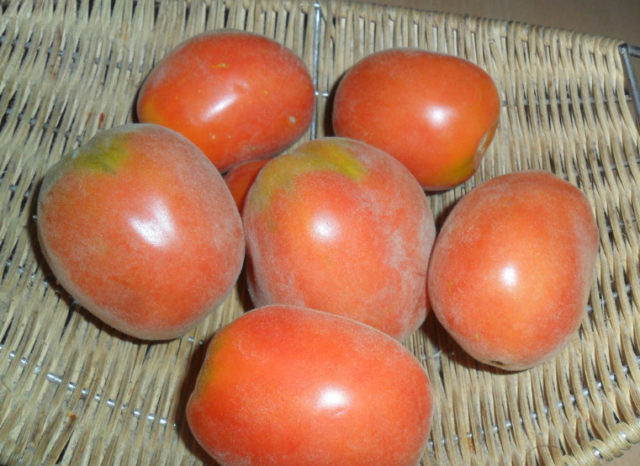
Tomato fruits are shelf-stable and transportable, not prone to cracking
Resistance to diseases and pests
The “Shaggy Bumblebee” tomato variety is susceptible to insect pests. For this reason, plants require careful care and regular preventive treatments.
Area of application of fruits
Tomatoes are consumed fresh and also used for canning. The fruits are sealed in their own juice, whole, and sauces are also prepared from them.
Advantages and disadvantages
The “Shaggy Bumblebee” variety is unusual, and at the same time undemanding in terms of maintenance. Its features surprise gardeners who are just getting acquainted with it. The culture bred in Siberia has its pros and cons.
Benefits of “Shaggy Bumblebee” tomatoes | Disadvantages of the variety |
Versatility, the ability to grow both in greenhouse conditions and in open beds | The need for regular feeding |
Good taste | Possibility of pest damage |
Resistance to temperature changes and various climatic conditions |
|
Undemanding to watering |
|
Preservation of presentation during transportation |
|
Keeping quality |
|
Use fresh and for preparations |
|
Features of planting and care
Tomatoes "Shaggy Bumblebee" are unpretentious. Growing them does not require much effort and a huge amount of time.
How to plant seedlings
Seeds for seedlings are planted in March. The soil for them is prepared in advance. It should be loose and nutritious. When choosing the time of sowing, they are guided by the expected date of transferring the seedlings to the open beds. The period for growing plants in containers is from 55 to 60 days.
Landing is carried out as follows:
- Take containers with drainage holes and fill them with soil.
- Moisturize.
- Make small holes. The distance between them should be approximately 4 cm.
- Place seeds in each.
- Lightly sprinkle with soil and tamp down carefully.
- Cover the top with film.
- Place the container in a room where the air temperature is maintained at +25 °C.
Tomato sprouts appear above the soil surface after 7 days. As soon as they hatch, the planting container is moved to a cooler place. Provide additional lighting for 12 hours a day.
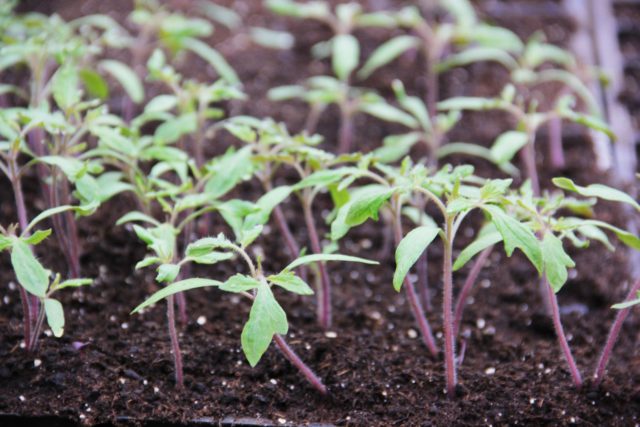
To make seeds germinate faster, they can be treated with growth stimulants.
Picking
When the seedlings have 2-3 true leaves, they are picked. To do this, take separate small pots or cups with a volume of about 500 ml.
Transplantation into open ground
Before transplanting young plants, they must be hardened off. To do this, “Shaggy Bumblebee” tomatoes are placed on balconies or terraces. It is advisable that the temperature on them be kept around +15 °C. The time spent in the cool place is increased gradually. After 2 weeks, the culture is ready for transplantation. It is placed in open beds so that there are up to 5 bushes per 1 m2. Further growth and development depend on growing conditions.
Features of tomato care Hairy bumblebee
In order for the plants to be healthy and bear fruit, it is enough to perform the following agrotechnical procedures:
- watering;
- weeding;
- loosening the soil;
- mulching with organic matter;
- preventive spraying against insect pests and diseases.
An important part of caring for the variety is the application of fertilizers. It is recommended to feed the crop once a month at the following stages of plant development:
- during flowering;
- during the formation of ovaries;
- at the time of fruit ripening.
Mineral phosphorus and potassium fertilizers are used.
Pest and disease control methods
The following diseases can affect tomato:
- White spot. It manifests itself in the formation of large grayish spots with a black border on the leaves. It affects plants at the end of summer, in hot weather. They must be destroyed to protect healthy specimens.
- Brown spot. It is typical for greenhouses, as it is caused by a fungus. The symptom of the disease is yellow spots on the leaf blades. Over time they turn brown. When fungus appears, greenhouses are treated with formaldehyde.
- Powdery mildew. It can be identified by the presence of a white coating on the foliage of the “Shaggy Bumblebee”, which gradually spreads to the stems. Occurs in high humidity and heat. At the first signs of damage, plants are sprayed with fungicides.
- Late blight. “Shaggy bumblebee” is considered the most common disease in tomatoes, which can lead to the death of plantings. Its signs are brownish watery spots that penetrate the pulp of the fruit and become covered with a whitish coating. The disease also affects leaf blades. They also develop light marks. Late blight usually occurs in late summer and early autumn.At the first symptoms, the affected leaves are torn off and burned. Treated with fungicides.
Among the insects that can cause harm to tomatoes are the following:
- Whitefly. It feeds on plant sap and accumulates on the lower surface of leaves, which become covered with yellowish spots. The insect is dangerous because, if numerous, it can destroy “Shaggy Bumblebee” tomatoes.
- Thrips. A sign of the appearance of these small black-brown pests on tomatoes is the formation of a large number of spots on the leaves.
- Aphid. Its colonies destroy green mass and fruits. The above-ground parts of the plants turn yellow, curl and gradually die. In addition, when aphids invade, viral diseases often develop. The insect serves as their carrier.
- Spider mite. The web it produces can be seen on “Shaggy Bumblebee” tomatoes with the naked eye. Infected bushes may die.
- Colorado beetle. It poses a serious threat to tomatoes as it eats foliage. His attacks occur at the end of spring.
Conclusion
The Shaggy Bumblebee tomato is a variety bred in Siberia that can be grown by summer residents and farmers throughout Russia. Many of them have already managed to appreciate tomatoes that do not crack and have good keeping quality. Their highlight is their velvety skin and pleasant taste.
Reviews of the tomato Shaggy Bumblebee
